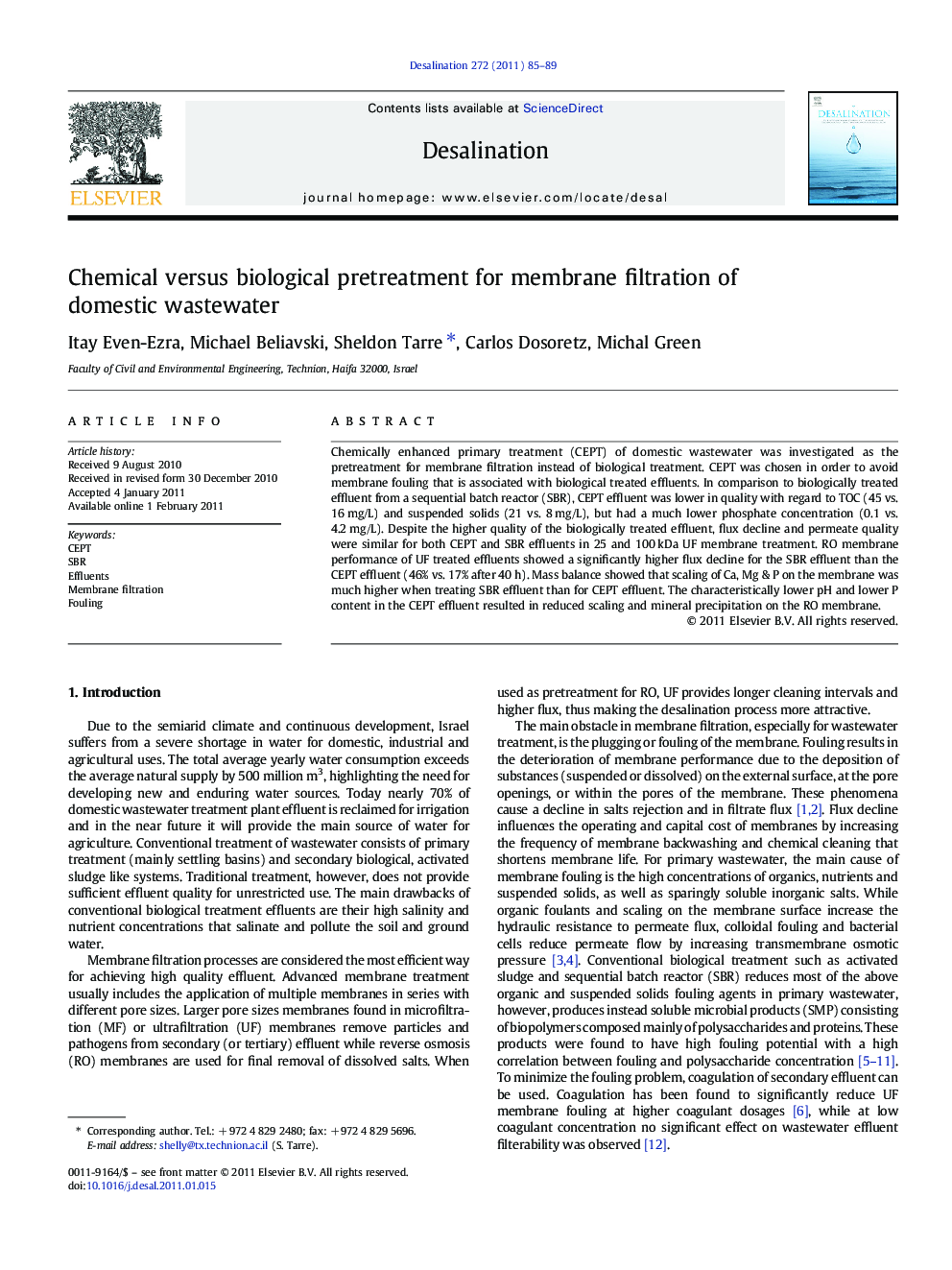| Article ID | Journal | Published Year | Pages | File Type |
|---|---|---|---|---|
| 625210 | Desalination | 2011 | 5 Pages |
Chemically enhanced primary treatment (CEPT) of domestic wastewater was investigated as the pretreatment for membrane filtration instead of biological treatment. CEPT was chosen in order to avoid membrane fouling that is associated with biological treated effluents. In comparison to biologically treated effluent from a sequential batch reactor (SBR), CEPT effluent was lower in quality with regard to TOC (45 vs. 16 mg/L) and suspended solids (21 vs. 8 mg/L), but had a much lower phosphate concentration (0.1 vs. 4.2 mg/L). Despite the higher quality of the biologically treated effluent, flux decline and permeate quality were similar for both CEPT and SBR effluents in 25 and 100 kDa UF membrane treatment. RO membrane performance of UF treated effluents showed a significantly higher flux decline for the SBR effluent than the CEPT effluent (46% vs. 17% after 40 h). Mass balance showed that scaling of Ca, Mg & P on the membrane was much higher when treating SBR effluent than for CEPT effluent. The characteristically lower pH and lower P content in the CEPT effluent resulted in reduced scaling and mineral precipitation on the RO membrane.
Research Highlights► UF and RO membranes were tested on biologically and chemically treated wastewater effluents. ► Despite the lower quality of chemically treated effluent, UF membrane performance was similar. ► Higher membrane performance for RO was observed for chemically treated effluent. ► Lower pH and lower P of chemically treated effluent resulted in reduced scaling on the RO membrane.
